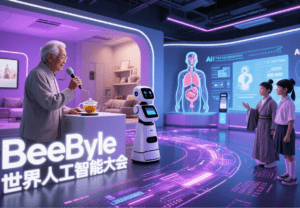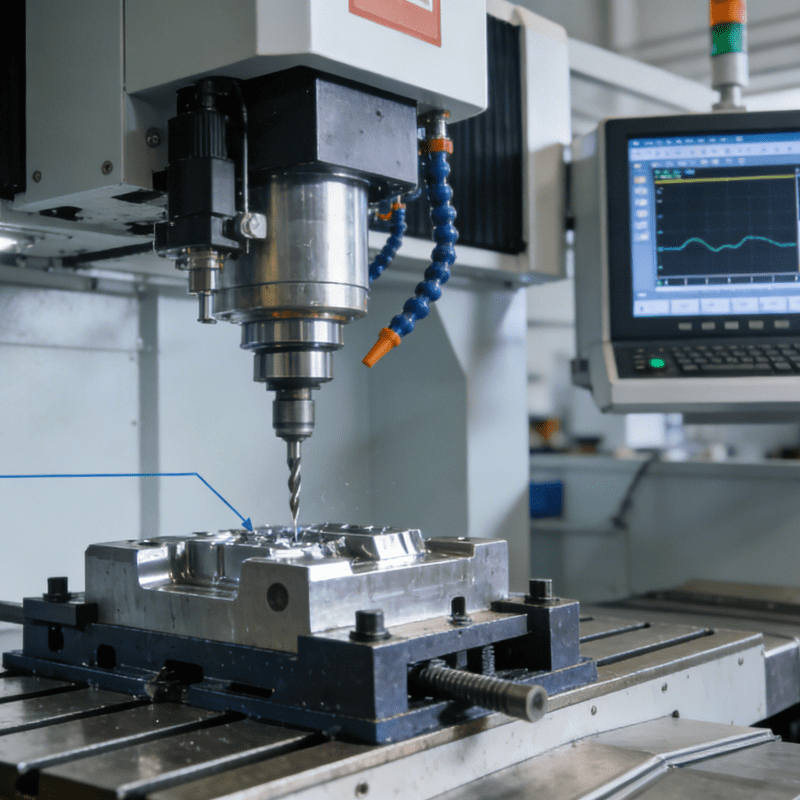At the “Intelligent Agent-Driven Industrial Transformation Forum” of the World Artificial Intelligence Conference (WAIC), Wang Aihua, Deputy Secretary-General of the China Artificial Intelligence Industry Development Alliance and Deputy Chief Engineer of the China Academy of Information and Communications Technology (CAICT), officially released and interpreted the “Top 10 Keywords for Intelligent Agents in 2025”.
In recent years, artificial intelligence technology has continued to develop in depth, and large-model applications represented by intelligent agents have become one of the core engines driving industrial intelligent transformation. Intelligent agents can fully integrate model technical capabilities with task execution capabilities, highly matching the increasingly complex needs for quality and efficiency improvement, and are expected to become a key force in promoting the deep integration of artificial intelligence and the real economy.
On the morning of July 28, 2025, the “Intelligent Agent-Driven Industrial Transformation Forum” of the World Artificial Intelligence Conference (WAIC) was successfully held. At the forum, Wang Aihua, Deputy Secretary-General of the China Artificial Intelligence Industry Development Alliance and Deputy Chief Engineer of the China Academy of Information and Communications Technology (CAICT), officially released and interpreted the “Top 10 Keywords for Intelligent Agents in 2025”. The ten keywords are: General Intelligent Agent, Specialized Intelligent Agent, Edge Intelligent Agent, Enterprise-Level Intelligent Agent, Intelligent Agent Platform, Intelligent Agent Communication Protocol, Multi-Agent Collaboration, Intelligent Agent Value Evaluation, Intelligent Agent Trustworthiness, and Intelligent Agent Benchmark Testing. They collectively reflect the current future development trends, technological research hotspots, and industrial focus of intelligent agents.
1. General Intelligent Agent: An All-Round “Digital Generalist”
General intelligent agents possess cross-domain knowledge and universal capabilities, able to understand and execute multiple types of tasks, serving as an important path toward general artificial intelligence. Their development not only relies on the improvement of large-model capabilities but also requires integrated innovation of multiple technologies such as perceptual planning, cognitive decision-making, multi-modal fusion, and human-machine collaboration. In the future, general intelligent agents will evolve through multi-stage capability leaps and multi-dimensional technological integration, driving human-machine collaboration from “passive response” to “active creation” and becoming new “digital employees” in the intelligent economy era.
2. Specialized Intelligent Agent: A “Domain Expert” with Professional Expertise
Specialized intelligent agents focus on specific industries, scenarios, or tasks, enhancing professional adaptability to a certain extent, enabling them to accurately understand business logic and efficiently execute specific tasks. Through model fine-tuning, knowledge injection, corpus enhancement, role setting, and behavioral constraints, they achieve deep adaptation to vertical industries such as finance, education, industry, medical care, law, and transportation, capable of handling more complex tasks. In the future, specialized intelligent agents will accelerate development in directions such as deepening vertical scenarios, improving product forms, and improving ecological systems.
3. Edge Intelligent Agent: A “Near-Field Assistant” for Proximity Response
Edge intelligent agents run on edge devices such as mobile devices, IoT devices, and PCs, enhancing local reasoning, privacy protection, and real-time response capabilities. They can realize functions such as offline perception, personalized recommendation, environmental adaptability, and rapid feedback, with advantages such as fast response speed, low network dependence, and high security. In the future, edge intelligent agents will further strengthen security and privacy, improve computing and reasoning efficiency, enhance interaction naturalness and context understanding capabilities, becoming important entrances and key computing nodes in the era of “smart interconnection of everything”.
4. Enterprise-Level Intelligent Agent: An “Intelligent System” for Quality and Efficiency Improvement
Enterprise-level intelligent agents are intelligent systems designed for complex enterprise business scenarios. They can integrate enterprise data assets and business processes, integrate technologies such as large models and RPA, connect information systems such as CRM, ERP, MES, and OA, and independently complete complex business processes, significantly improving enterprise operation efficiency and management levels. Emphasizing controllability, interpretability, and system integration and compatibility, they are key tools for promoting enterprises’ digital and intelligent transformation. In the future, enterprise-level intelligent agents will continue to deepen in cross-system collaboration, process reengineering, and decision support, helping enterprises build a new operation model of “human-machine collaboration + automatic operation” and comprehensively supporting high-quality enterprise development.
5. Intelligent Agent Platform: An “Incubator” for Ecological Convergence
Intelligent agent platforms are “infrastructure” for managing the entire lifecycle of intelligent agents, capable of realizing functions such as intelligent agent design, development, deployment, management, operation, and maintenance. They integrate core capabilities such as model calling, low-code development, data management, template customization, knowledge management, workflow orchestration, and performance monitoring, effectively reducing the threshold for intelligent agent research, development, and application. They provide one-stop services for intelligent agents from “development – launch – monitoring – iteration”, accelerating the application and implementation of intelligent agents. In the future, intelligent agent platforms will become the core of the intelligent agent industry chain, promoting the transition of technological applications from laboratories to production lines and supporting the construction and prosperity of large-scale intelligent agent ecosystems.
6. Intelligent Agent Communication Protocol: An “Interactive Bridge” Connecting Everything
Intelligent agent communication protocols are key basic standards for interconnection between intelligent agents, as well as with large models or external tools. By unifying communication semantics, interface specifications, and behavioral patterns, they enable intelligent agents from different manufacturers and platforms to achieve barrier-free collaboration and information sharing, realizing “one-time development, multi-terminal compatibility” and greatly promoting the opening of the intelligent agent ecosystem and cross-domain integration. In the future, the functions of intelligent agent communication protocols will become increasingly rich, and their security will continue to improve, serving as an “interactive bridge” between intelligent agents and the outside world.
7. Multi-Agent Collaboration: A “Wisdom Alliance” for Collective Efforts
Multi-agent collaboration refers to multiple intelligent agents completing complex tasks through collaboration, game, competition, and cooperation, breaking through the capability bottlenecks of single intelligent agents, achieving a collective intelligence effect of “1+1>2”, and showing broad application potential. Multi-agent systems emphasize autonomy, collaboration, and adaptability, achieving goals such as task allocation and resource coordination through reasonable division of labor and collaboration mechanisms. In the future, with the development of communication protocols and collaboration algorithms, multi-agent collaboration is expected to make breakthroughs in more fields, giving birth to a new paradigm of “swarm intelligence”.
8. Intelligent Agent Value Evaluation: A “Decision Criterion” for Quantitative Orientation
Intelligent agent value evaluation needs to measure multiple aspects such as the application value, economic value, and social value of intelligent agents, covering dimensions such as function richness, performance superiority, user satisfaction, business impact, and cost input. Scientific intelligent agent value evaluation is conducive to policy formulation, optimization and deployment, and decision support. Currently, intelligent agent value evaluation is in the evolution stage from qualitative to quantitative and from static to dynamic. In the future, multi-dimensional, sustainable, and reusable evaluation models and tool sets should be built to promote the formation of mechanisms such as intelligent agent ROI analysis and full-lifecycle value tracking, providing a scientific basis for large-scale deployment and precise investment of intelligent agents.
9. Intelligent Agent Trustworthiness: A “Cornerstone of Trust” for Value Alignment
Intelligent agent trustworthiness focuses on aspects such as professionalism, controllability, authenticity, and security during the research, development, and application of intelligent agent products, ensuring their reliability and compliance during use. It emphasizes “alignment with human values” and requires the establishment of standards in data usage, bias control, and behavior interpretation to prevent “black-box risks” and “value deviations”. In the future, the construction of intelligent agent trustworthiness will continue to develop, focusing on strengthening research on high-quality data supply, multi-technical integration and innovation, and the construction of security evaluation frameworks, helping intelligent agent applications to be more transparent and controllable, and fully aligned with human values.
10. Intelligent Agent Benchmark Testing: A “Capability Ruler” for Scientific Rigor
Intelligent agent benchmark testing aims to scientifically measure the understanding ability, decision-making ability, and execution efficiency of intelligent agents through standardized test tasks, evaluation indicators, and operating environments. Currently, benchmark testing is evolving from single indicators to multi-dimensional, from static testing to dynamic interaction, and from manual evaluation to simulation testing. In the future, building high-quality testing systems suitable for different types of intelligent agents and close to real scenarios will provide institutional guarantees and technical support for the healthy development of the intelligent agent industry.
Next, CAICT will focus on collaborating with various parties in the intelligent agent industry to conduct research on intelligent agent communication protocols, accelerate the construction of intelligent agent testbeds, and carry out intelligent agent benchmark testing. It will also continue to conduct research on the intelligent agent industry, standard development, evaluation and testing, and take multiple measures to promote technological innovation and application practice of intelligent agents in China, accelerating the growth and expansion of the intelligent agent industry.




















